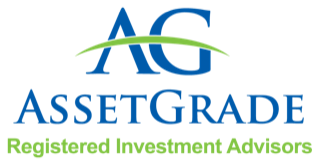
Shutdown Lesson - Why We All Need Some Emergency Cash
Politics aside, it was tragic to hear that many government workers ran into trouble paying their bills when they did not have a paycheck for a month. Unfortunately, this cash shortfall is not unusual, as a Federal Reserve survey last year showed that 40% of American adults would not be able to cover a $400 emergency expense or would do so by borrowing or selling something.
Although many HENRYs (High Earners, Not Rich Yet) make more than the maximum government salary of $140K per year and may have substantial 401(k) balances, even HENRYs can sometimes run into trouble if they have not put enough emergency cash aside. In fact, one of the key pillars of a financial plan is to make sure that emergency cash is available if needed.
The rule of thumb for the right amount of emergency cash is anywhere from three to twelve months’ worth of expenses. The more risk in your personal situation, the higher the amount of emergency cash needed.
In a high-risk situation, such as a family with several young kids, a stay-at-home spouse and a primary breadwinner working at a brand-new startup firm, then twelve or more months’ worth of expenses in cash might be needed. If there are two breadwinners and at least one has a secure job, such as a government worker, then a smaller amount, say three months’ worth of expenses, might be needed.
As an example, if your expenses run at $10K/month and you determine that you should keep four months’ worth of expenses in emergency cash, then you should have $40K put aside in a cash-equivalent holding. This can be in the form or an FDIC-insured bank account or money market fund – something accessible and safe. The good news is that rates are now a little higher than they were last year, so you should be able to get a rate of 1.5% to 2.5% on your cash as of today. It pays to shop around to get a good rate – too many banks have left their interest rates near zero for many accounts.
If you have little or no emergency cash put aside, start a savings plan to build one up. Find a bank account with a decent rate of interest and start having a small amount deposited automatically in that account each month. Over time it will build up and you should eventually be able to hit your target level of emergency cash.
The first step in calculating the right level of emergency cash for yourself is to determine your monthly “burn rate.” That is the amount of cash you require every month to pay all of your bills. Most folks do not know what that amount is. Rather than try to calculate everything from a bottoms-up perspective by adding your mortgage payment, utilities, car payment, credit card bill, etc., it is better to calculate it from a top-down perspective. Look at how much net pay is deposited in your bank account each month from your paycheck, then look at how much is left over at the end of each month. The difference between the two is your monthly burn rate, or your typical monthly expenses. If you repeat this process and take an average of the last six months, you should be able to get a reasonable estimate of your monthly expenses.
You can then assess your own risk level. From the earlier examples, if you are in a high-risk situation, you would want twelve or more months’ worth of expenses available in emergency cash. If you are in a relatively secure situation, you may only need three months’ worth of expenses in emergency cash.
There is a cost to having too much cash put aside, since you will likely earn far less for the cash than you would with a well-diversified portfolio over time. Some folks end up with a high opportunity cost because they kept too much of that extra cash aside and missed out on being able to get better investment returns.
The right amount of emergency cash is a combination of your actual monthly expenses and the level of security you would like to see. Bad things can happen at any time, so keeping at least some cash in a rainy day or emergency fund is a good way to sleep better at night!

